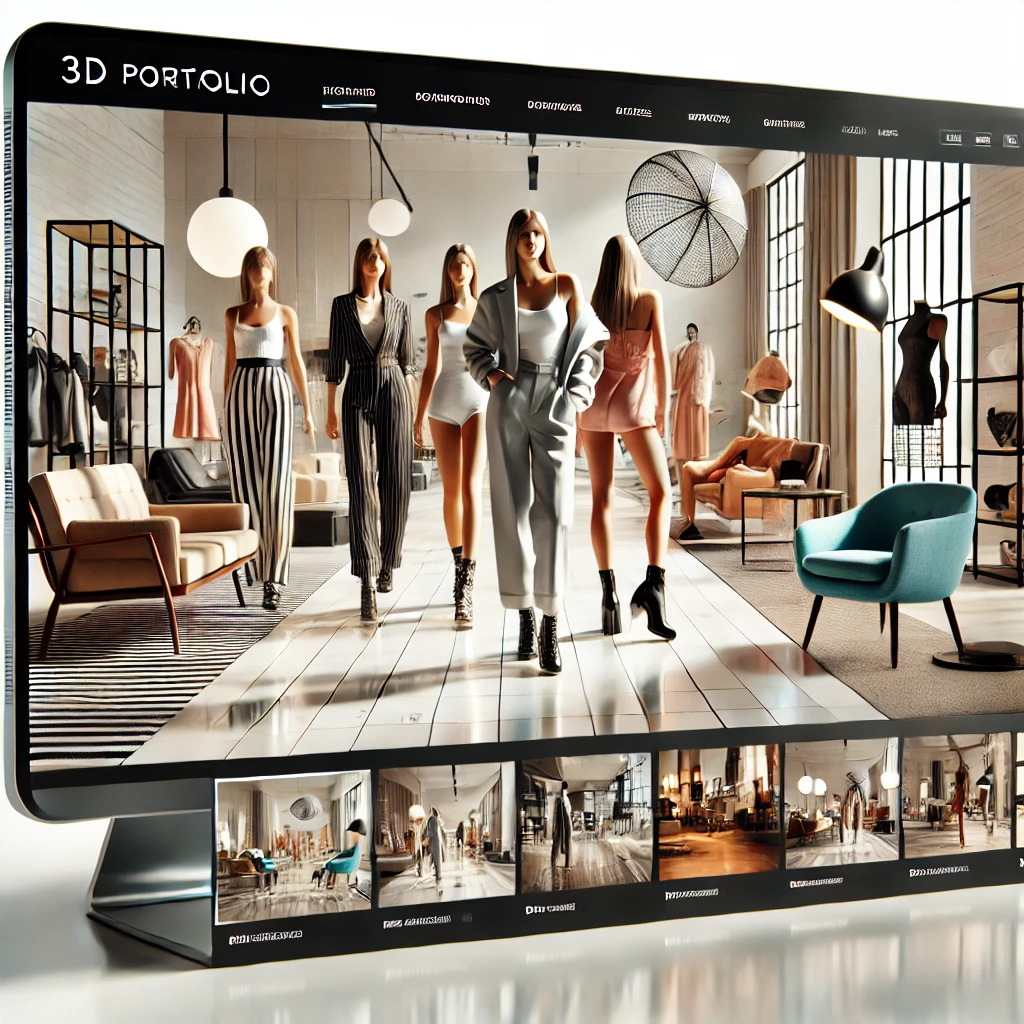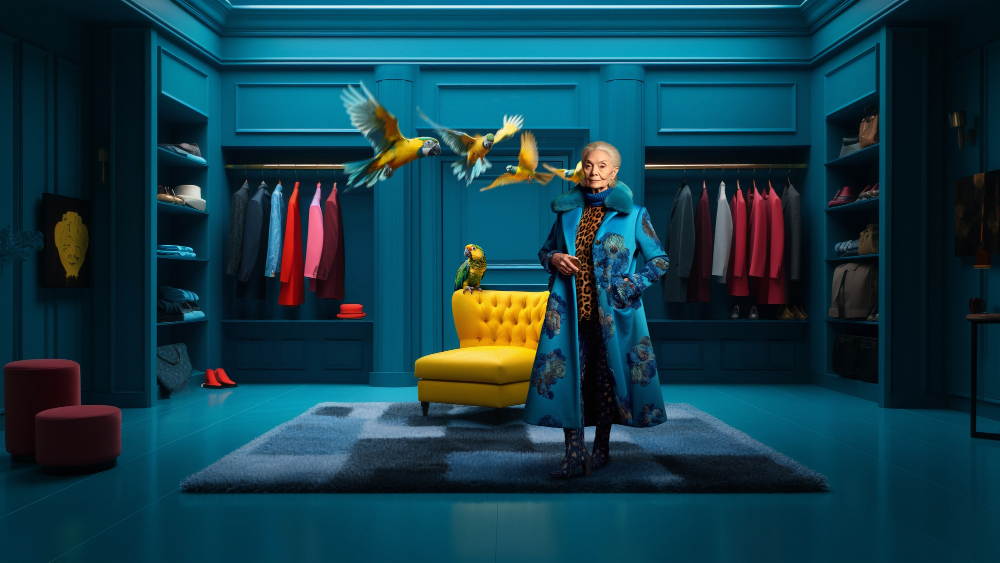The fashion industry is known for its adaptability and rapid adoption of innovations, from textile advancements to automation in garment production. Now, 3D in fashion is setting new standards, reshaping the creative and technical processes involved in bringing ideas from sketch to runway. With CAD fashion design software and virtual prototyping, clothing designers and professional fashion designers can create, test, and market their garments digitally, saving time, reducing waste, and enhancing creativity.
Let’s explore how this transformative technology is changing the fashion industry, influencing everything from the design phase to the consumer experience, and making fashion designers rethink traditional methods of creating physical samples and visualizing final products.
The Impact of 3D Technology on the Fashion Industry
In the traditional fashion industry, physical samples have always been crucial for designers to visualize and adjust garments. However, traditional prototyping methods are costly and resource-intensive, often requiring many iterations and extensive manual labor. 3D in fashion allows designers to perform this iterative process digitally, saving time and money while enabling more flexibility in the design process.
For instance, creating a prototype for a new collection typically takes weeks and involves various departments, from pattern makers to technical designers. Virtual prototyping replaces this with a streamlined, digital-first approach where garments can be tested for fit, appearance, and material behavior in a matter of hours, without cutting a single piece of fabric. 3D fashion design software is enabling a level of agility previously unseen in the fashion industry, giving brands an edge in a fast-paced, trend-driven market.
Revolutionizing the Design Process with CAD Fashion Design Software
One of the primary tools behind this transformation is CAD fashion design software. An example of such software is C-Design Fashion, which streamlines the clothing production lifecycle by facilitating the creation, organization, and sharing of design ideas while offering tools for real-time information sharing and efficient management of production components. These programs, such as Marvelous Designer, CLO 3D, and Romans CAD, offer a range of features tailored to the needs of the fashion industry. They provide fashion designers with the ability to visualize garments in three dimensions, simulate fabric draping, and create intricate designs without requiring physical materials.
1. Streamlined Design Workflow and Intuitive Interface
CAD software solutions are crafted with intuitive interfaces that simplify the complex design development process. For instance, Marvelous Designer allows users to create digital garments that behave realistically, enabling adjustments to be made in real-time. Its fabric analyzer mimics how different fabrics behave, such as silk’s flow or denim’s stiffness. This level of realism is crucial for fashion designers who need an accurate representation of their garments before moving forward with production.
Additionally, these tools offer video tutorials and guidance, making it easier for both new and experienced designers to adapt to digital design methods. With tools like Adobe Illustrator for flat sketches and Substance 3D for realistic textures, designers can now see lifelike versions of their garments without producing a single sample. This technology is an especially valuable asset in the initial stages of design, as it allows for greater experimentation and refinement of fashion ideas.
2. Reduced Environmental Impact through Virtual Prototyping
One of the significant advantages of 3D in fashion is its impact on sustainability. Traditional prototyping methods generate a substantial amount of waste through fabric scraps, discarded samples, and dye usage. Virtual prototyping minimizes these resources by enabling fashion designers to create digital garments, reducing the need for physical resources until the final design stage.
Industry estimates suggest that digital sampling can reduce waste by up to 35%. This reduction aligns with the industry’s push for sustainability and eco-conscious production practices. By minimizing physical samples, fashion brands can lessen their carbon footprint, conserve water, and produce less waste. This shift not only benefits the planet but also improves the fashion industry’s reputation among environmentally-conscious consumers.

3. Faster Production Speed and More Customization Options
The integration of 3D fashion design into production workflows also accelerates the overall production speed. Traditionally, creating a single garment might involve numerous fittings, adjustments, and customizations, each of which requires a new prototype. 3D in fashion allows designers to create clothing that is customizable to individual preferences and body shapes, making quick modifications digitally and cutting down the time it takes to reach the final product.
CAD fashion design software also supports custom-fitted patterns that can be quickly adjusted to suit different body shapes, allowing brands to cater to a broader customer base. This level of customization means that brands can introduce new collections more frequently and in a shorter timeframe, keeping up with evolving fashion trends. Additionally, this agility helps brands respond to customer feedback more efficiently, as design modifications can be made instantly without disrupting the development cycle.
4. Enhancing Customer Experience with Virtual Fitting Session
Virtual fitting sessions, powered by augmented reality (AR), allow customers to visualize garments on digital models or even on themselves through mobile apps. E-commerce platforms benefit greatly from this technology, as it offers shoppers a more interactive experience. By allowing users to see how garments would fit on their bodies, brands can reduce return rates, boost customer satisfaction, and build stronger brand affinity.
Moreover, fashion brands can use virtual clothing models in marketing campaigns, showcasing garments in motion or on animated models that display a garment’s real-time interaction with different body types and movements. This interactive approach appeals to modern consumers who prefer a more immersive, personalized shopping experience.
Realistic Visualization and Prototyping
Realistic visualization and prototyping are game-changers in the world of 3D fashion design. By leveraging advanced 3D software, designers can craft highly realistic digital prototypes, allowing them to visualize and test their ideas long before creating physical samples. This digital-first approach enables designers to spot and rectify potential issues early in the design process, significantly reducing the need for costly and time-consuming revisions.
Moreover, 3D prototyping offers the flexibility to experiment with various fabrics, colors, and textures, providing a comprehensive understanding of how designs will look and feel in real life. This capability not only enhances the creative process but also ensures that the final product aligns closely with the designer’s vision, ultimately leading to more refined and market-ready garments.
Key CAD Fashion Design Software Tools Used in 3D Fashion
The rise of 3D in fashion has led to the development of specialized CAD software that meets the industry’s unique demands. Here’s a look at some of the most popular tools in the industry:
- Marvelous Designer: Known for its high-quality 3D garment designs, this tool offers designers an unparalleled level of realism. Its fabric analyzer simulates different material properties, allowing designers to choose fabrics that best suit their vision before producing samples.
- CLO 3D: This software is designed with pattern makers in mind, offering features for creating custom-fitted garments and viewing how they fit on animated models. CLO 3D is ideal for technical designers who need accuracy in digital patterns and garment assembly.
- Romans CAD: A favorite among technical designers and pattern makers, Romans CAD allows for precise adjustments and modifications in complex garment designs, making it highly valuable for large apparel companies that prioritize accuracy.
- Adobe Illustrator and Substance 3D: Adobe’s tools are essential for creating flat sketches and adding lifelike textures. Adobe Illustrator is widely used for sketching, while Adobe Substance provides realistic 3D textures, helping designers create ultrarealistic images for virtual prototyping.
3D Modeling Techniques and Best Practices
Creating accurate and realistic 3D models requires a blend of artistry and technical skill. One of the most crucial techniques is using reference images and real-life measurements to ensure that the 3D model is proportionate and true to life. Combining 2D and 3D modeling techniques allows designers to craft intricate designs and patterns that stand out.
High-quality textures and materials are essential for giving the 3D model a realistic look and feel. By meticulously applying these elements, designers can create digital garments that closely mimic their physical counterparts. Adhering to these best practices ensures that the final 3D models are not only visually stunning but also accurate representations of the intended designs.
Collaboration and Efficiency in the Design Development Process
Collaboration between fashion designers, technical designers, and pattern makers is crucial to the successful launch of any collection. 3D fashion design software streamlines this process by allowing all stakeholders to work within a unified digital environment. Teams can make adjustments, communicate ideas, and provide feedback without waiting for physical samples to arrive or for multiple rounds of alterations.
The design workflow is significantly enhanced with real-time collaboration, allowing faster iterations and reducing miscommunication. For fashion brands that operate globally, the ability to hold virtual meetings and share digital samples is a game-changer, enabling teams to launch collections more rapidly and with fewer production errors.
Virtual Prototyping: A Modern Solution to Traditional Challenges
Traditionally, professional fashion designers relied on physical samples to test design ideas and make modifications. Virtual prototyping changes this by allowing designers to visualize garment designs digitally, offering a more efficient way to bring ideas to life. Here’s how 3D in fashion improves upon traditional methods:
- Speed and Cost Efficiency: Virtual samples can be created in minutes rather than days, significantly reducing production timelines. Additionally, virtual prototypes eliminate the costs associated with materials and labor needed for physical samples.
- Realistic Renderings and Design Validation: CAD software provides realistic renderings that accurately reflect fabric texture, color, and behavior. Designers can test complex designs digitally, allowing them to make changes before production. This feature helps avoid costly errors and ensures that designs are production-ready.
- Reduced Waste: As physical samples are no longer required for each modification, waste is minimized, which is especially beneficial for the environment. With virtual prototyping, only the final approved designs go to production, creating a more sustainable approach to fashion.
High-End Fashion Brands Adopting 3D in Fashion
Luxury brands like Louis Vuitton and Hugo Boss are among the leaders in adopting 3D technology in their design and production processes. Louis Vuitton uses CAD fashion design software to create digital prototypes, allowing for more innovative and complex designs. Hugo Boss has implemented virtual fitting sessions to ensure that every garment fits perfectly before it reaches production.
By incorporating 3D in fashion into their workflows, these brands are not only staying ahead of trends but also setting new industry standards for quality and innovation. The ultrarealistic images generated by 3D technology enable these luxury brands to maintain their high standards while reducing resource usage, aligning with sustainable practices.
Virtual and Augmented Reality Integration
The integration of virtual and augmented reality (VR/AR) is revolutionizing the fashion industry, offering designers and consumers alike a more immersive and interactive experience. With VR/AR technology, designers can create virtual environments to test and refine their designs, making adjustments in real-time without the need for physical prototypes.
For consumers, VR/AR provides the exciting possibility of virtual try-on experiences. Through mobile apps and e-commerce platforms, customers can visualize how garments will look on their bodies, enhancing their shopping experience and reducing the likelihood of returns. This technology not only enriches the design process but also elevates the overall customer experience, making fashion more accessible and engaging.
Training and Education in 3D Fashion Design
As 3D fashion design becomes increasingly integral to the industry, proper training and education are paramount. Many fashion schools and institutions now offer specialized courses and programs in 3D fashion design, equipping students with the skills and techniques needed to excel in this innovative field. These programs cover everything from basic 3D modeling to advanced digital prototyping, ensuring a comprehensive education.
Additionally, online tutorials and workshops provide valuable opportunities for designers to learn from industry experts and stay updated with the latest trends and technologies. By investing in continuous learning, designers can remain at the forefront of the industry, leveraging the full potential of 3D fashion design to create cutting-edge garments.
Digital Asset Creation for eCommerce and Marketing
In the digital age, high-quality digital assets are crucial for eCommerce and marketing success in the fashion industry. Using 3D software, designers can create detailed 3D models, textures, and materials that bring their designs to life online. These digital assets enable the creation of interactive and immersive customer experiences, allowing shoppers to engage with products in a more meaningful way.
Virtual try-on features, powered by these digital assets, let customers see how clothes would look on them without the need for physical fittings. This not only enhances the shopping experience but also helps reduce return rates, making it a win-win for both consumers and brands. By leveraging digital asset creation, fashion brands can elevate their online presence and connect with customers on a deeper level.
Scalability for Businesses of All Sizes
3D fashion design is not just for large, established brands; it offers significant benefits for small and medium-sized businesses as well. With the help of 3D software, designers from businesses of all sizes can create realistic and accurate 3D models, streamlining the design process and reducing the need for physical samples and prototypes.
This digital approach is particularly advantageous for smaller businesses that may not have the resources to produce multiple physical prototypes. By adopting 3D fashion design, these businesses can reduce costs, accelerate their design timelines, and produce high-quality garments that compete with larger brands. Ultimately, 3D fashion design democratizes the industry, making innovative design accessible and affordable for everyone.
The Role of 3D Technology in Reducing Physical Samples for Fashion Designers
The integration of 3D technology in the fashion industry is revolutionizing the design process for fashion designers, particularly in pattern making and creating basic shirts. With advanced software suites, designers can use tools like Adobe tools to craft MTM patterns tailored to individual body shapes. This capability not only streamlines the design tool process but also allows designers to hold virtual fittings with animated models. These virtual fittings provide immersive experiences, enabling designers to see how garments interact with different fit models and other elements in real time. For experienced users, this technology enhances collaboration and creativity, reducing reliance on physical samples and making the design workflow more efficient. By utilizing 3D solutions, fashion brands can innovate their product offerings while ensuring each piece meets the specific needs of their customers.

The Future of 3D in Fashion
As 3D fashion design continues to evolve, so does its potential for enhancing consumer experiences and expanding creative boundaries. With advancements in augmented reality, virtual clothing, and body scanning, consumers may soon be able to order custom-fitted garments from their homes, reducing returns and increasing satisfaction.
The integration of 3D technology into every stage of the fashion production process demonstrates the industry’s commitment to innovation and efficiency. As technology becomes more accessible, we may see a shift towards more sustainable, inclusive, and customizable fashion, transforming the way we design, produce, and wear garments.
Conclusion
Incorporating 3D in fashion is transforming the industry, enabling faster, more sustainable practices. At 3DAiLY, we specialize in innovative 3D character and asset creation for the fashion and lifestyle sectors using advanced Generative AI technology. Our platform showcases branded wearables and accessories in photorealistic 3D for e-commerce and AR/VR experiences. With a hybrid approach that combines AI with skilled artistry, we deliver quick, high-quality, and affordable solutions. Join us at 3DAiLY to empower your brand with stunning 3D models that bring your creative vision to life. Visit our website to get started!



